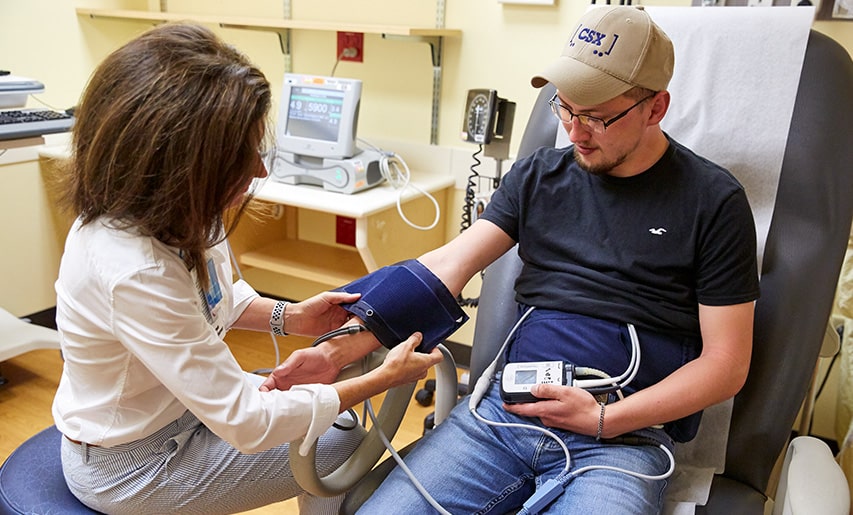
VADs a Viable Option for Some Patients with a Failing Fontan
As more individuals who had a Fontan operation as infants grow to adulthood, many begin having problems with their Fontan circulation as they age. When this happens, they are often referred for transplant.
The Heart Institute at Cincinnati Children’s is at the forefront of providing some of these patients with a viable option when they are too sick initially to undergo a transplant. This team has made great strides in using ventricular assist devices (VADs) as a bridge to transplant or for chronic therapy, with some patients living for more than three years with a VAD.
“One of the biggest issues is that patients with a failing Fontan circulation at times present for transplantation when they are no longer great candidates,” explains David L.S. Morales, MD, director of Congenital Heart Surgery. “We’ve been using VADs in some of these patients, which allow them to get in much better shape, so that they are good candidates for transplantation and achieve excellent outcomes. The goal is not to just get to transplant but to do fantastic after transplant.”
Identifying Patients Plays a Critical Role
Data shows the healthier patients are going into transplant, the better they’ll do after transplant, and VADs are helping them get there. Identifying which of these patients referred for transplant are most likely to do well with a VAD is paramount to success. Angela Lorts, MD, MBA, director of the Ventricular Assist Device Program, notes that VADs aren’t the answer for every patient with a failing Fontan physiology, but the Heart Institute team has experience in identifying those who are best suited for this treatment.
“We have performed a significant number of VADs in both children and adults, and we have supported a number of Fontan patients as well,” Lorts says. “The more of these Fontan VADs we perform, track and study, the better we understand how to better care for this patient population. The goal is to improve the long-term outcomes for this patient population.”
The VAD team has cared for more than 120 patients supported with a VAD since the program’s inception in 2010.
Aided by a National Collaborative
Contributing to these positive outcomes is a large network of institutions working together across the country. Dubbed ACTION (Advanced Cardiac Therapies Improving Outcomes Network), this learning network brings together 58 North American centers that collaborate to improve outcomes for patients through sharing data, using quality improvement and research to standardize best practices.
“As a network we are focused on improving VAD support of the Fontan physiology as well as improving transplant outcomes for the Fontan patient,” says Lorts, who is co-executive director of the network. “We are also working to improve organ availability by conducting research to determine better donor–recipient size matching and reducing adverse events for these patients.”
Cincinnati Children’s houses ACTION’s operations team and data coordinating center, and many faculty and staff are active leaders in the network.
Transplant Program Sees Increased Volume
The Transplant Program at Cincinnati Children’s evaluates patients for heart, lung, heart-liver, and heart-lung transplants. In 2021, the program had double the number of overall transplant evaluations and listings as compared to 2020. They have performed heart and heart-liver transplants for patients with Fontan circulation. Some of these patients were supported with a VAD as bridge to transplant.
Morales proposes that the number of Fontan patients who could benefit from a VAD was likely underestimated in the past. With the Heart Institute team’s successes, he cites that their patients are doing better than originally anticipated.
“We’ve demonstrated that the strategy of VAD support for Fontans is probably underutilized and can be very successful to maximize a patient’s longevity and reverse some of their chronic complications from the Fontan circulation,” Morales says.
Lorts emphasizes that early referral offers the best options for these patients. To refer a patient with Fontan circulation for consideration for advanced cardiac therapies by the Cincinnati Children’s team, call 513-636-3944 or 513-803-4580.